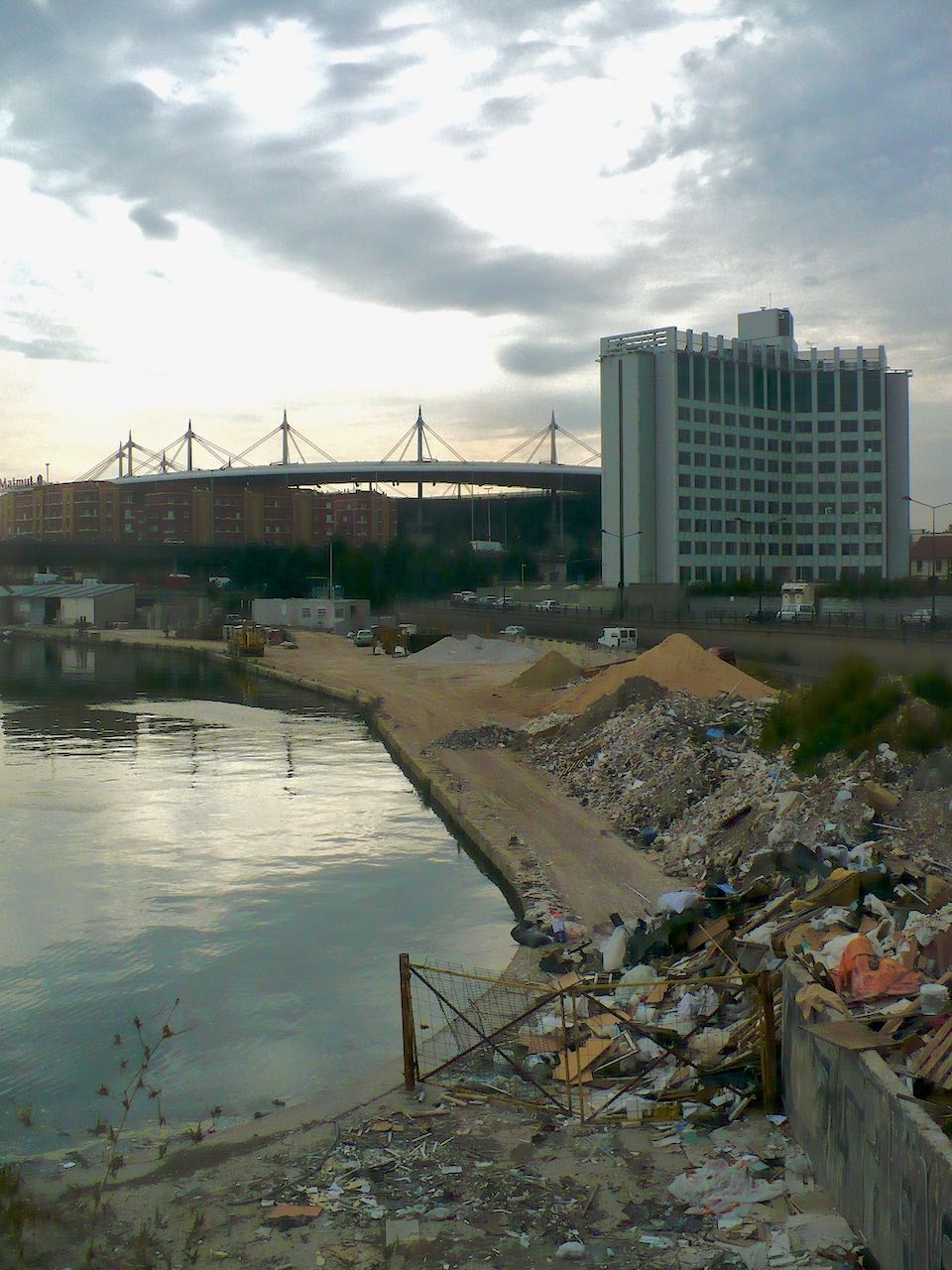To save money on metro tickets, I began to ride my bike to campus most days. The convoluted route taught me a lot about the economic geography around Paris. Saint-Denis, especially in its southern zone adjoining Aubervilliers, had once been a massively industrialized space. But it had faced rapid deindustrialization in the 1960s and 1970s (Guglielmo 1986). Instead of factories, I saw warehouses, construction sites, a postindustrial campus for the Maison des Sciences de l’Homme Paris Nord, a tire business, an Islamic social service agency, plebian cafes, street markets and a few glassy office buildings. There was space for rent. Old buildings lingered as orphans, as the absence of their original neighbors was evoked by their undecorated side walls, forlorn and windowless. The streets were full of hostile traffic and inhospitable empty zones to cross. The bridges, canals, railroads and highways cut the city into pieces. It was anything but a uniform Cartesian grid, and you had to navigate partly by landmarks. At the halfway point, you passed a lone skyscraper, the Pleyel Tower. If you looked up, you might notice two massive state monuments protruding from the horizon.

The two monuments give us historical coordinates: they were accidental bookends of the twentieth century. Looking south towards Paris, the Basilica of Sacré-Coeur glowered at the clouds from atop Montmartre, the hill just behind my apartment in northern Paris. The massive church had been built between 1875 and 1914 as a Catholic symbol of the “return to law and order,” in the aftermath of the Paris Commune’s bloody defeat in 1871 (Harvey 2003:323). Republicans understood the building, correctly, as a reactionary affirmation; in 1880, the Paris city council denounced it as “an incessant provocation to civil war” (Harvey 2003:329). By the time of my fieldwork, this history of anticlerical struggles and failed revolutions was entirely submerged in the Basilica’s modern identity — a bohemian tourist trap with a good view. White tourists were not told that the adjacent neighborhood, Barbès-Rochechouart, was the liveliest, most racially diverse zone of working-class life in Paris. It bustled with commerce and energy, and was full of political conflicts over immigration, Islam, and police harassment. What were the tourists told? A crypto-racist message: to beware of pickpockets.

In the other direction, looking north and a little east of downtown Saint-Denis, you could spy the tall, spidery masts of the 80,000-seat national stadium, the Stade de France. The Stade, first opened for the 1998 World Cup, was credited as a turning point in banlieue modernization, ushering in a new post-Fordist economy in Saint-Denis, which centered on cultural industries and gentrification (Bordes 2007:38). France had won the World Cup in the newly-opened stadium; its multiracial team was then headed by Zinedine Zidane, whose working-class Algerian origins made him a national symbol of racial integration. Yet the stadium itself, as a monumental state project, was politically ambiguous, equally displaying the failures of Republican social inclusion. During my fieldwork, the homeless camped along the industrial canal by the stadium, symbolizing the left-behinds of the post-Fordist economy. And on 13 November 2015, the stadium became a target for three suicide bombers sent by the Islamic State, in parallel with similar attacks on Paris restaurants and the Bataclan nightclub.
The Basilica and the stadium were accidental monuments to France’s ongoing social fractures. They loomed on the horizons of Saint-Denis.